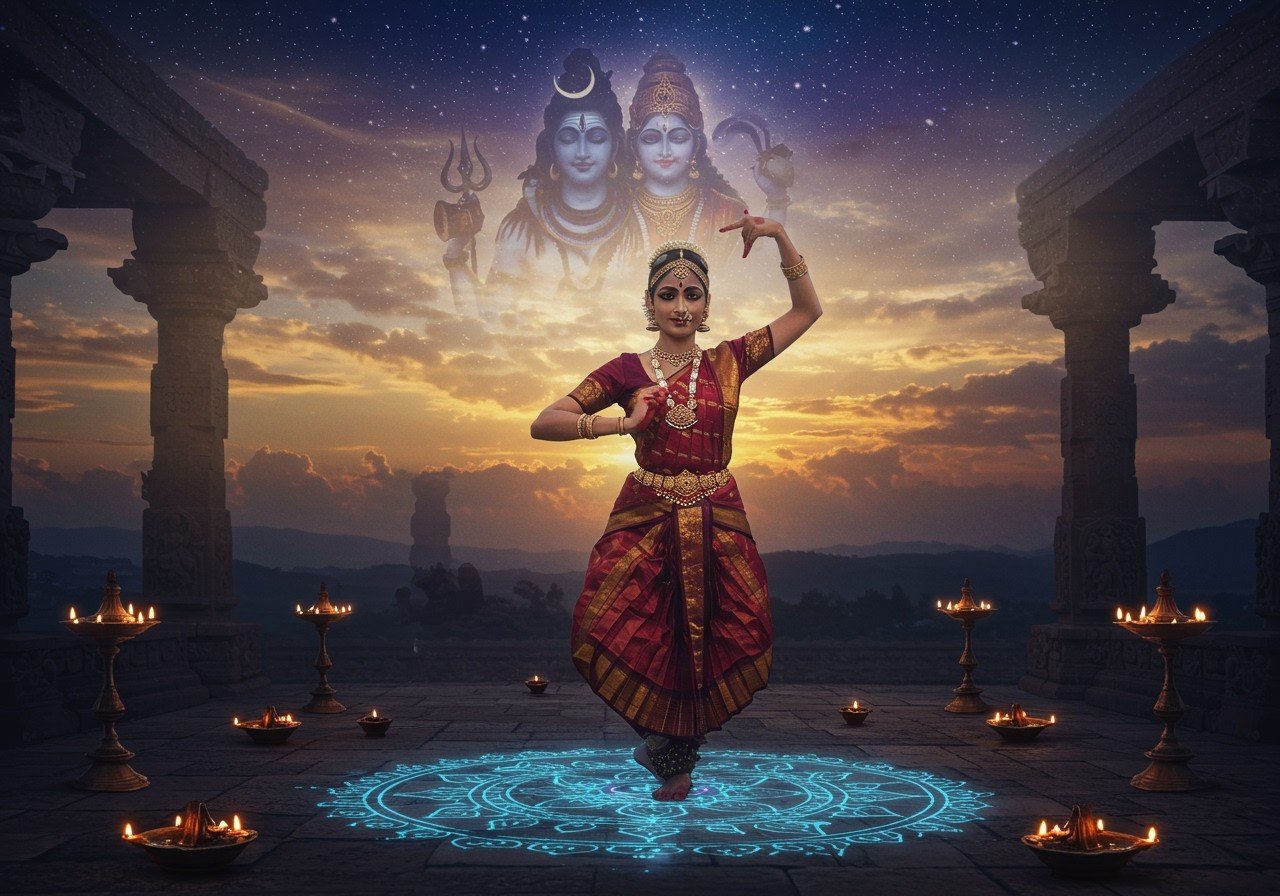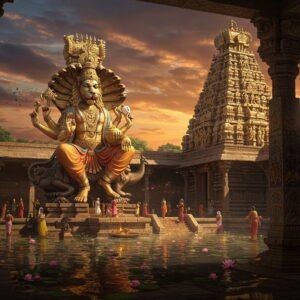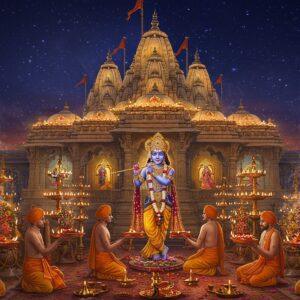
Pradosha, a time deeply revered in Hindu tradition, holds immense spiritual significance, particularly for its connection to Lord Shiva. Occurring twice a month on the 13th day of each lunar fortnight, Pradosha is dedicated to celebrating Shiva’s cosmic dance. This sacred occasion holds a special place in Hindu culture, influencing various art forms and rituals, and profoundly impacting Indian Classical Dance. It reflects the rich traditions cherished by many, adding a layer of depth and meaning to these artistic expressions.
Delving into the Essence of Pradosha
Pradosha is more than just a point in time; it’s a sacred juncture for devotees of Lord Shiva to offer their worship and seek His divine blessings. During this period, it is believed that celestial alignments amplify spiritual energies, potentially opening pathways to higher states of consciousness. The rituals associated with Pradosha include fasting, heartfelt prayers, and expressive dance offerings, all symbolizing deep devotion to Lord Shiva. It is said that Shiva’s cosmic dance, the Ananda Tandava, takes place during Pradosha, representing the eternal cycle of creation and destruction. This shared spiritual practice unites communities, strengthening cultural bonds and reinforcing the power of collective worship.
Pradosha’s Influence on Bharatanatyam
Bharatanatyam, a classical dance form steeped in ancient tradition, beautifully embodies the essence of Shiva’s cosmic dance. Performances often depict the Ananda Tandava, showcasing intricate footwork, precise hand gestures (mudras), and deeply expressive facial expressions. Dancers weave their devotion to Shiva into the very fabric of their choreography and music, creating a mesmerizing tapestry of art and spirituality. Renowned Bharatanatyam artists often dedicate specific pieces to Pradosha, underscoring its importance within the dance form. During Pradosha rituals, dancers engage in spiritual preparation, focusing their minds and establishing a profound connection with the divine.
Pradosha and the Grace of Odissi
Odissi, another classical Indian dance form, holds a unique and profound connection with Pradosha. Known for its spiritual depth and fluid grace, Odissi dancers use sculptural poses and flowing movements to depict Shiva’s divine dance. The Mangalacharan, an invocation often performed at the beginning of an Odissi recital, includes prayers and salutations to Lord Shiva. The movements and expressions in Odissi resonate with the spiritual vibrations of Pradosha. The dance form seamlessly incorporates Pradosha themes, shaping its narrative content and enhancing its spiritual focus. For dancers seeking authentic ritual items for their Odissi performances during Pradosha, Poojn.in offers a wide selection of pure cotton dhotis and other traditional attire.
Pradosha and the Rhythmic Storytelling of Kathak
Kathak, a North Indian classical dance form, also shares a deep connection with Pradosha. With its focus on storytelling and divine narratives, Kathak often portrays episodes from Lord Shiva’s life, including the Tandava. The rhythmic cycles, intricate footwork, and graceful spins in Kathak mirror the cosmic cycles of the universe. Kathak beautifully embraces themes of duality, balance, and the interplay of creation and destruction. Dancers skillfully incorporate the spiritual essence of Pradosha through emotive expressions, precise footwork, and evocative gestures. Celebrated Kathak performances often pay homage to Lord Shiva’s cosmic dance, honoring the sacredness of Pradosha. You can find essential puja items for Kathak performances during Pradosha on Poojn.in, including traditional clay diyas and clay water pots for creating a sacred atmosphere.
Pradosha and the Spiritual Dimension of Dance
Indian Classical Dance offers a profound spiritual dimension, further enriched by the sacred time of Pradosha. Dancers utilize this auspicious period to deepen their practice, connect with the divine, and transcend the boundaries of the physical world. The concept of ‘Natya Yoga,’ where dance becomes a form of meditation and spiritual discipline, comes to life during Pradosha. Performing during this sacred time is considered transformative, as dancers seek to embody divine energy and move beyond worldly limitations. Personal anecdotes from dancers often reveal profound spiritual insights gained during Pradosha performances. If you’re seeking ways to enhance the spiritual atmosphere of your dance practice during Pradosha, Poojn.in offers a variety of incense, sandalwood, agarbatti and other traditional items.
Embracing the Sacred: Dance as a Spiritual Offering
Pradosha beautifully intertwines with Indian classical dance, enriching both artistic expression and spiritual devotion. It is a time when tradition, reverence, and creative energy converge. Dancers from various traditions, including Bharatanatyam, Kathak, and Odissi, embrace the spiritual energy of Pradosha, honoring Lord Shiva’s cosmic dance. Their performances transcend mere entertainment, becoming a profound connection to the divine. This sacred link fosters a sense of community and shared cultural heritage. As dancers perform, they invite the audience to join them on a spiritual journey. Pradosha inspires not only the artists but also those who witness their art, creating a bridge between the earthly realm and the divine. By celebrating Pradosha through the medium of dance, we preserve our rich cultural traditions while inviting new generations to experience its profound impact. It is a powerful reminder of the role art plays in our spiritual lives, offering a pathway to personal growth and collective harmony. More insights on cultural celebrations can be found on our blogs about Navratri and Devi Jagadambi.
Understanding Pradosha’s Impact on Dance: Frequently Asked Questions
What is Pradosha, and why is it significant in Indian classical dance? Pradosha is a sacred time dedicated to Lord Shiva, occurring twice a month. It’s believed that during Pradosha, Shiva performs his cosmic dance, the Tandava, which has deeply influenced various Indian classical dance forms. Dancers incorporate the Tandava’s energy and symbolism into their performances, enhancing their spiritual depth.
How does Shiva’s cosmic dance, the Tandava, shape Indian classical dance? The Tandava embodies creation, preservation, and destruction – the cyclical nature of the universe. Dances like Bharatanatyam and Kathak draw inspiration from the Tandava’s movements and expressions to convey similar themes, enriching the dance with spiritual significance. The cosmic dance informs the choreography, imbuing it with deeper layers of meaning. It’s not merely movement but a reflection of universal energies.
Which classical dance forms are particularly connected to Pradosha? Bharatanatyam, Kathak, and Odissi are among the classical dance forms most deeply influenced by Pradosha. These styles frequently include dances that depict stories of Shiva and his cosmic dance. The narratives and choreography often highlight the spiritual connection with Pradosha, allowing dancers to express their devotion and reverence. Explore our blog on Khajuraho temples to discover further connections between art, architecture, and spirituality.
Why is Pradosha important for classical dancers? Pradosha provides dancers with a unique opportunity to connect with divine energies. Performing during this time is considered highly auspicious. It is believed that dancers can imbibe the spiritual essence of Shiva’s dance, enhancing their expression, focus, and devotion. Pradosha elevates their artistic practice into a spiritual experience.
Are there specific dances performed by classical dancers on Pradosha? Yes, dancers often perform dedicated pieces honoring Lord Shiva during Pradosha. Dances like the Nataraja, depicting Shiva as the Lord of Dance, are common choices. These performances celebrate his cosmic dance and are deeply connected to the spiritual energy of Pradosha. They serve as a powerful medium for expressing devotion and reverence. For those interested in essential puja items for Pradosha, Poojn.in offers a curated collection to support your spiritual practices.
How do dancers prepare themselves spiritually for Pradosha performances? Dancers frequently engage in spiritual practices such as meditation, prayer, and fasting to prepare for Pradosha performances. They aim to embody the energy and grace of Shiva’s dance, ensuring their performance resonates with the sacred connection. This preparation enhances their artistic expression and creates a deeper connection with the audience.
Can attending a dance performance on Pradosha enhance the audience’s experience? Witnessing a dance performance during Pradosha can be a deeply enriching spiritual experience for the audience. The connection between the dance and Shiva’s cosmic dance can evoke a sense of awe, reverence, and devotion, creating a truly memorable experience. It transcends entertainment, offering a glimpse into the realm of the divine.
You can also explore our blog post about essential puja samagri to learn more about creating a sacred space for your spiritual practices.


